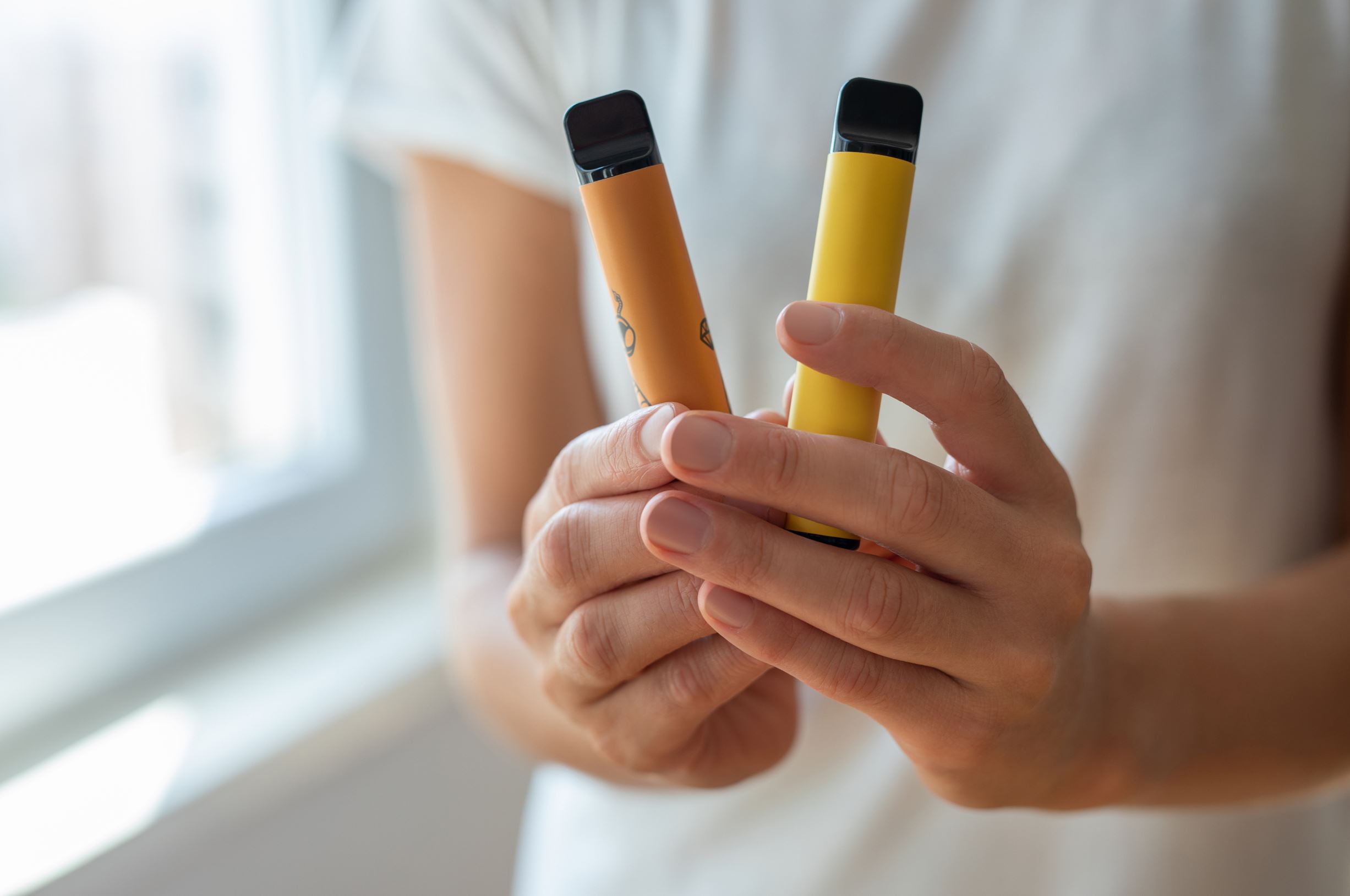Disclosure: From 2017-2020, Dr Mendelsohn was the founding chairman of the Australian Tobacco Harm Reduction Association (ATHRA), a health promotion charity established by medical practitioners to raise awareness of safer alternatives to smoking. ATHRA received unconditional funding from two vape companies to assist with its establishment costs from 2017-2019. Dr Mendelsohn stepped down from the Board in 2020. He was invited to speak on the science of vaping nicotine at the World Vape Show in Dubai in 2022. His travel and accommodation expenses were paid by the organisers, Quartz Business Events. Dr Mendelsohn has never received funding from vape or tobacco companies.
Schools do not have the resources to police vaping and the current punitive strategies of suspensions, vape detectors, locking toilet doors and toilet raids are not working.
We need a fresh approach which acknowledges the reality that kids will vape, whether we approve or not. This is my seven-point plan.
1. Keep it in perspective
The panic about youth vaping is grossly out of proportion to the harm it causes.
Other risky teenage behaviours are of much greater concern, such as smoking, binge drinking, illicit drug use and drink driving. There are high rates of bullying, mental illness, suicide attempts, sexual and other violence and car accidents that cause far more harm.
In 2019, 63 Australian teenagers died from alcohol. No teen or adult has ever died from vaping nicotine.
A recent assessment of youth drug harms ranked vaping as just about the least harmful form of drug use among young people.
2. Know the facts
There is widespread misinformation about vaping nicotine. Vaping is not risk-free but has only a small fraction of the risk of smoking, estimated to be around 5 per cent of the risk or less by the UK Royal College of Physicians and the UK Government.
Most vaping by young people who have never smoked is short-term and experimental and the risk of harm is particularly low with this pattern of vaping.
New users who vape too much nicotine can suffer nausea, dizziness and feel faint. If this occurs, it is best to lie down and wait for it to pass. These symptoms settle quickly and are not serious.
Importantly, there is no evidence that vaping causes kids to take up smoking if they would not have otherwise done so (the so called ‘gateway theory’). In fact, vaping is diverting kids away from smoking and reducing youth smoking rates overall.
Most young people who try vaping do not get addicted to nicotine. Nicotine withdrawal is unpleasant, but not a serious health concern.
There is no evidence that nicotine harms the human adolescent brain. Studies have not found differences in in IQ, educational achievement or cognitive abilities in adults as a result of past smoking, so vaping is very unlikely to have these effects.
There is no evidence that vaping nicotine causes the serious lung disease “E-cigarette or Vaping Associated Lung Injury” (EVALI), “popcorn lung”, seizures or spontaneous pneumothorax (lung collapse).
There is a rare risk of burns and injuries from lithium-battery explosions.
Harms from long-term vaping may emerge over time but are highly likely to be far less than smoking.
This 5-minute video summarises the health risks for teen vapers.
3. Provide accurate information
Schools should educate students and staff about vaping with honest, evidence-based information. Exaggerating the risks of vaping or providing misinformation to discourage vaping leads to a loss of trust. Kids know when they are being lied to.
My advice on what to say to teens about vaping is:
- Vaping is a quitting aid for adult smokers
- Vaping is not recommended for young people who do not smoke
- Vaping is not harmless and there are small potential risks, particularly nicotine dependence. However, vaping is far less harmful than smoking
- There may be additional risks from black market products
- There may be further risks from long-term use that we don’t yet know about
- Ultimately, vaping is their choice
My short video here can be used to educate students about vaping.
Peer pressure is a powerful driver of teen vaping. It can be helpful to teach kids how to refuse the offer of a vape, for example with role plays.
Discussion of the environmental impact of vaping may help. Litter from disposable vapes ends up in landfill where it causes soil and water pollution. Lithium-ion batteries are a fire hazard if discarded into general waste and should be discarded in battery recycling bins.
4. Have realistic expectations
Even the best education programs have very limited success in changing youth behaviour.
Teenagers are programmed for “sensation-seeking” and taking risks. Risky behaviours are driven by peer influence and emotional factors, not cognitive factors or knowledge.
5. Avoid punitive and coercive measures
Coercive and harsh responses are “like a red rag to a bull”. Kids resent being lectured to about their behaviour and this can undermine their relationship with adults.
Punitive approaches such as suspensions are not effective and have potentially harmful consequences such as academic failure, dropouts, violent and anti-social behaviour and smoking, especially for vulnerable students.
6. Advise how to quit vaping
Quitting vaping is generally much easier than quitting smoking as vaping is less addictive. However, some students may need advice and support to quit.
Some vapers can stop abruptly. Others prefer to gradually reduce the nicotine content of the vape and use it less frequently. Increasing the time between vaping, and setting rules for when and where you do and do not vape, can help.
Some will benefit from switching to nicotine replacement therapy (NRT), such as patches or gums, as a step towards quitting.
After quitting, it is a good idea to keep a vape or faster-acting NRT (eg gum or lozenge) at hand for when a sudden trigger causes an urge to smoke. The use of NRT is approved from the age of 12.
7. Develop a policy for vaping at school
Most Australian schools do not have a policy on vaping or education programs for vaping. Each school should develop clear policy guidelines and outline how vaping should be managed.
Restrictions are needed, but a pragmatic, supportive and compassionate approach is more likely to be effective and acceptable.
Some students are addicted to nicotine and need to vape at regular intervals during the day. Consider allowing addicted students to take short breaks to vape outside if needed during class hours. Nicotine withdrawal is unpleasant and can be disruptive.
Vaping in school toilets is unacceptable, but policing it is almost impossible to enforce and is a strain on sparse school resources.
Although controversial, some schools could consider a designated outdoor vaping area. This should ideally be out of sight, for example behind the toilets, and restricted to students who:
- Are ‘registered’ as vapers
- Are over a certain age (eg 16 years), and
- Have the written parental permission.
Vaping won’t be as appealing to teens if they are allowed to do it.
This proposal should not be seen as an endorsement of youth vaping, but as a pragmatic solution for the reality of nicotine dependence.
The sale of vapes at schools should be banned and vigorously enforced.














